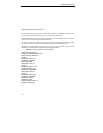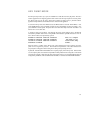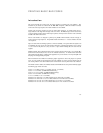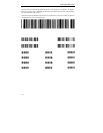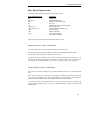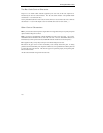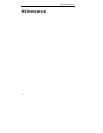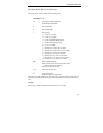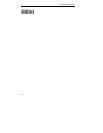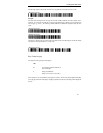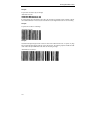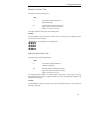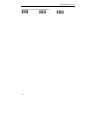
Printing Basic Bar Codes
137
Bar Code Definition
The sequence used to define a horizontal bar code is
^BNxccc...c^G
^B Two Character Sequence Identifier for
Horizontal Bar Code Definition.
N Reserved Parameter.
x Bar Code Type.
“a” = Code 39 1:1:2:2 Ratio
“b” = Code 39 1:1:3:3 Ratio
“c” = Code 39 1:2:4:5 Ratio
“d” = Code 39 LOGMAR Standard Density
“e” = Code 39 LOGMAR Medium Density
“f” = Code 39 LOGMAR Low Density
“g” = 2-of-5 1:1:3:X Ratio
“h” = 2-of-5 1:2:3:X Ratio
“i” = Interleaved 2-of-5 BS Code 1:1:3:3 Ratio
“j” = Interleaved 2-of-5 BS Code 1:2:4:5 Ratio
“k” = Interleaved 2-of-5 BS Code 1.5:1.5:4.5:4.5 Ratio
“l” = Interleaved 2-of-5 BS Code 2:2:6:6 Ratio
“m” = Interleaved 2-of-5 C Code 1:1:2:2 Ratio
“n” = Interleaved 2-of-5 C Code 1:1:2.5:2.5 Ratio
“o” = Interleaved 2-of-5 C Code 1.5:1.5:3.5:3.5 Ratio
“p” = Interleaved 2-of-5 C Code2:2:4.5:4.5 Ratio
ccc...c Characters to be Bar Coded.
^G Sequence Terminator.
Required to signal end of character data.
The width of a defined bar code is predetermined by the definition of the bar code type. The width of all
bars and spaces is automatically set.
Example:
The following sequence defines a Code 39 LOGMAR bar code of standard density. The characters
“12345” are encoded in the bar code.
^BNd12345^G^-
Example:
The same character data is represented below in a low density LOGMAR bar code.




